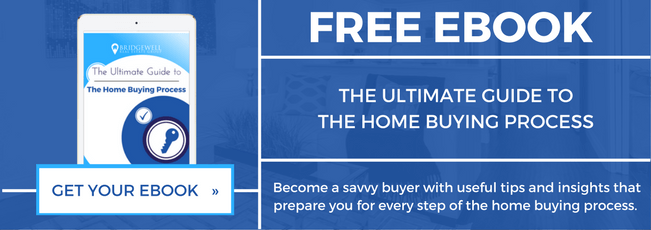Strata Documents To Read Before You Buy
For Attached Real Estate Properties
Strata documents can be very overwhelming, and a lot of clients make the mistake of not even reading them.
We’ve received up to 600 pages in strata documents per unit – and as a buyer, if you don’t know what to look for you’ll probably miss out.
This blog goes through the important strata documents to read, and what to look out for in the documents while reading them.
So here are TOP 9 STRATA DOCUMENTS to read through in detail before you remove subjects and hand in your deposit.
FORM B
Why should I read it?
This form is extremely important, because it will tell you exactly what is included in the unit and what to expect. It confirms the strata maintenance fee, the number of parking stalls included, and the storage locker included – if any.
It also outlines the financials of the strata, thus stipulating the amount in the contingency reserve fund, and whether any special levies/assessments are being assigned to the owners of the building.
For investors, it will also tell you whether or not rentals are allowed in the building and/or details on any restrictions.
DEPRECIATION REPORT
Why should I read it?
Most lenders require a depreciation report, and if for whatever reason the strata has decided against obtaining a depreciation report, you may have your options in terms of lenders minimized.
Furthermore, depreciation reports will break down what is expected for repair and maintenance over time, and also assesses how the contingency reserve fund will hold up based on those repairs. It typically outlines your building’s financials over time, and whether or not owners should expect special levies given that the contingency cannot fully fund the repairs needed. Think of your depreciation report as your long-term inspection report, but instead of it being for the unit it is for the building as a whole.
For more information on depreciation reports when purchasing, read this blog post: Depreciation Reports Explained
BYLAWS & RULES
Why should I read it?
If you have pets or are thinking of renting the property, then the bylaws and rules are going to be extra important for you. The bylaws will of course outline what is restricted in the building, and what all owners are required to comply with. For example, many buildings do not allow pets over 30 pounds, or only allow 1 pet rather than 2.
Rentals are also often restricted to either a percentage or number of units in the building. Additional rules include only certain types of barbeques on the balconies, no smoking, quiet hours after 11PM, and requirements to ask the permission of strata to alter and renovate your unit.
Knowing what you can and cannot do in your unit and the common areas will ultimately determine whether you will continue to pursue this purchase.
For more information on bylaws, read this blog post: Strata Bylaws in Condos and Townhomes
ENGINEERING REPORT
Why should I read it?
Nowadays, every strata building and/or complex with have a 2-5-10 warranty in place which will cover cosmetic, mechanical, and structural components. As each milestone year (2nd, 5th, and 10th) comer nearer, the strata council will typically have an engineering report done to ensure that what needs maintenance and is covered in the warranty is completed.
The engineering company hired will assess the building for deficiencies, so that the strata can determine what may be addressed in the warranty.
LAST 2 YEARS OF STRATA MINUTES
Why should I read it?
The strata minutes will outline all of the strata meetings and will give you a rough idea of ongoing projects and issues in the building that have come to order. For example, these may include security upgrades and/or break-ins, noise complaints, history of special levies, and building maintenance.
By reading these minutes, you will also be able to get a feel for how the council deals with these issues and gage how pro-active they are. The council’s members will include a board of residents who volunteer or are elected annually, typically along with one property manager, who manage the building/complex and its finances.
ANNUAL GENERAL MEETING MINUTES
Why should I read it?
The annual general meeting, also known as the AGM, is held once a year to update the residents on the strata’s doings for the past year, finances and insurance coverage. It also sets out a budget for the coming year, and whether or not they expect the current strata fees to cover that budget.
It may also discuss any proposed changes to the bylaws/rules, and whether any special levies may show up on the horizon. This document will help to give you an overall idea of what the future of the building/complex will look like, along with how they’ve performed in the past.

SPECIAL GENERAL MEETING MINUTES IF ANY
Why should I read it?
Special General Meeting Minutes are an important document to read because these meetings would only be in effect if there was something out of the ordinary to deal with, hence the term ‘special.’
It may be something like a special levy to cover costs for trimming and cutting down trees in a townhouse complex, or news of a leak in a condo and how the strata will be dealing with it. Whatever it is, you’ll want to know what is happening/happened and how it is going to be resolved/was resolved.
INSURANCE NOTE
Why should I read it?
Every strata corporation is required to obtain insurance for the building on the strata plan, common areas, and original fixtures. You’ll want to be aware of what is covered in the strata insurance so that you can plan your home insurance accordingly.
The insurance note is typically attached to the annual general meeting minutes, and it is important that you obtain the most recent copy of the insurance note so that you can pass this along to your insurance provider.
STRATA PLAN
Why should I read it?
The strata plan is a legal document that would have been submitted by the builder of the complex/building close before it was built. It outlines all the planned dimensions of each unit, common areas, and what parking is allocated to each unit.
It is important to review this document so that you are aware of exactly what you are purchasing, and to double check that the square footage in the MLS feature sheet (if not professionally measured) matches the strata plan. If there is a discrepancy between the strata plan and the MLS details you’ll want to question why.
—
Buying a strata property is a different ball game than a detached home, and involves a lot more paperwork and condo/townhouse specific knowledge.
If you’re considering buying or selling a strata property and are looking for a realtor that specializes in these properties, give us a call or text at 604-319-0200, or email [email protected] to start a conversation.



